The article “Digital Ghosts in the Modern Classroom” by Ashley Hinck discusses the common misconception that students have regarding what “digital skills” actually are, and how that misconception leads to “digital ghosts” being present in the classroom. Today’s students understand the importance and necessity of digital skills in the workplace and classroom; however, students believe that simple tasks (such as dragging and dropping something or following a linear set of steps with low risk of failure) constitute “skills”. This common misconception illustrates not only their understanding of digital media, but of school as well: They follow steps and come to a “correct” answer, which negatively impacts their learning experience if discovery is the goal. Students are very familiar with using common websites (sometimes referred to as “template platforms”) such as Canva or Facebook to create; what students don’t realize is that these platforms actually limit what students can create because they are so basic. Other more complicated platforms like Scratch or HTML give students much more freedom to create freely, but when they actually use them in class, the template platforms continue to impact the learning experience because students are so used to using them, following linear instructions, and coming to a correct answer. The lingering of template platforms in classrooms is what Hinck describes as “digital ghosts” in the classroom; the template platforms might not be physically there, but the thought process with which students associate them continues to linger in their heads. This ghost impacts students in a number of ways; students may lose confidence in their digital abilities more quickly, they may see the trial-and-error process as a “failure”, and they may be hesitant to see themselves as creators. Obviously, using more open-ended technologies are much more difficult and can get messy, but there are ways for educators to help banish these digital ghosts. Giving students permission to fail (and even encouraging students to fail), encouraging discussions of what it means to “make” something, and celebrating student successes on a difficult project are all critical pieces of what it takes to banish the digital ghosts and allow open-ended, authentic creation in the classroom. Educators absolutely must help their students see themselves as creators and the possibilities beyond the “right answers” to which students are so accustomed.
I decided to do a Twitter essay for a couple of reasons. Firstly, I use Twitter very frequently (in fact, it’s my favourite app to use), so I already feel relatively comfortable using it. Secondly, I see Twitter essays very frequently when I scroll through my news feed, and I always enjoy reading them, so I thought it would be fitting to create one myself. There is something about clicking on someone’s thread and reading all of their ideas in a series of tweets that appeals to me. I like the fact that someone can share important ideas on a fairly non-academic platform, but still have the ability to get their point across in a medium other than a scholarly journal, for instance. I think that the ability to share such ideas on a common social media platform is (and will be) very attractive to the next generation of students coming into classrooms in a digital age. When looking to incorporate technology into an assignment, all educators should strongly consider allowing their students to express themselves in creative manners, such as Twitter essays. Personally, I would love to provide this option to my students one day and see what masterpieces they create; doing so would give me a high level of satisfaction as an educator, knowing that my students can use digital technology to communicate their knowledge and ideas of a given topic. Students as well would also benefit, seeing themselves as true creators in an age where the use of digital technology is becoming more and more prevalent in everyday life. It’s a win-win situation!
Now, enjoy my Twitter masterpiece! If you want to read from a particular tweet, just click on the image and the thread will open for you in a new tab. To benefit fully from my Twitter essay, click on the images and read it on Twitter itself… that way, you can see the GIFs move!
(After you read my Twitter essay, be sure to continue reading, as I discuss some applications of Hinck’s article in my personal life and my ever-evolving teaching career!)
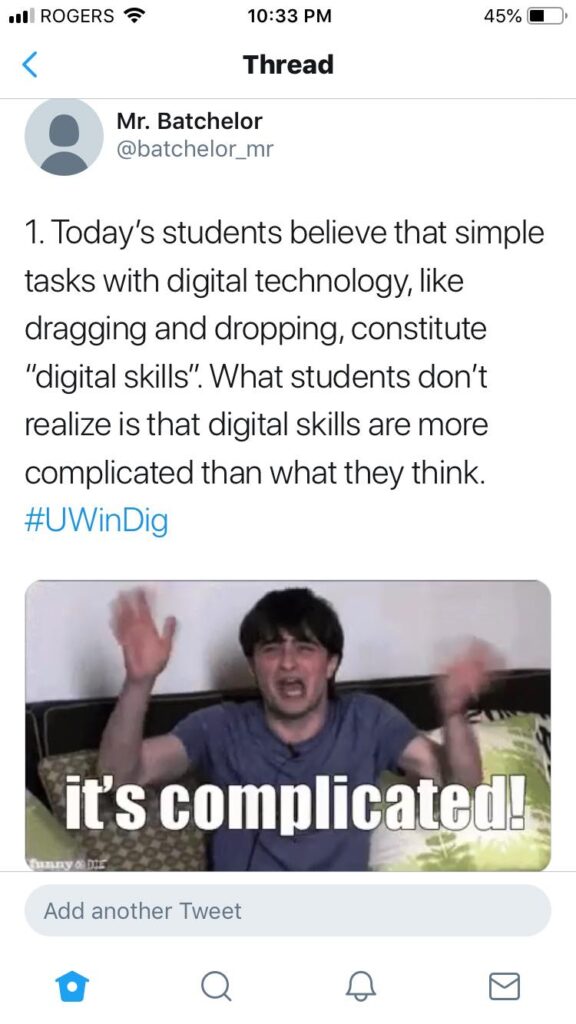
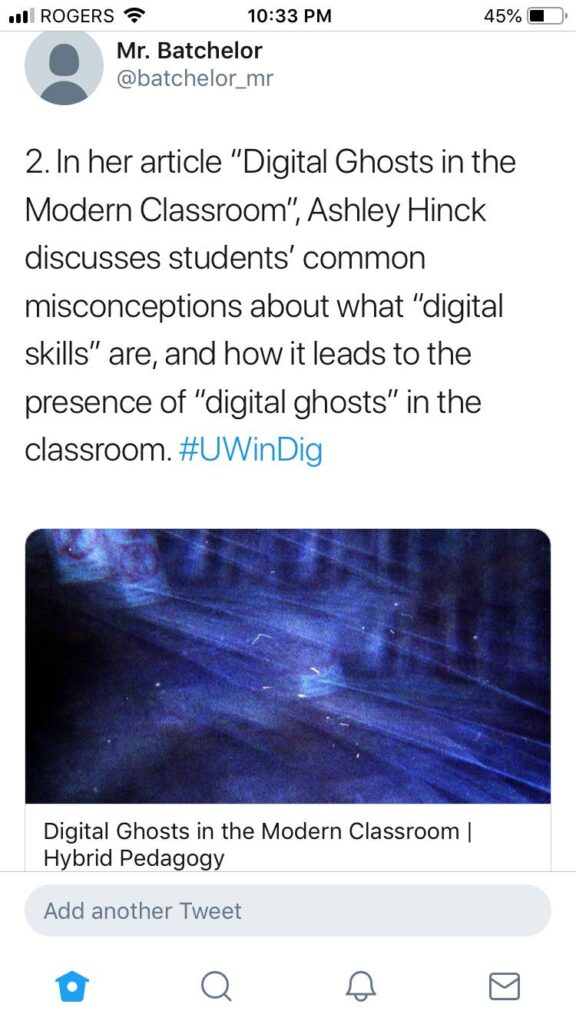
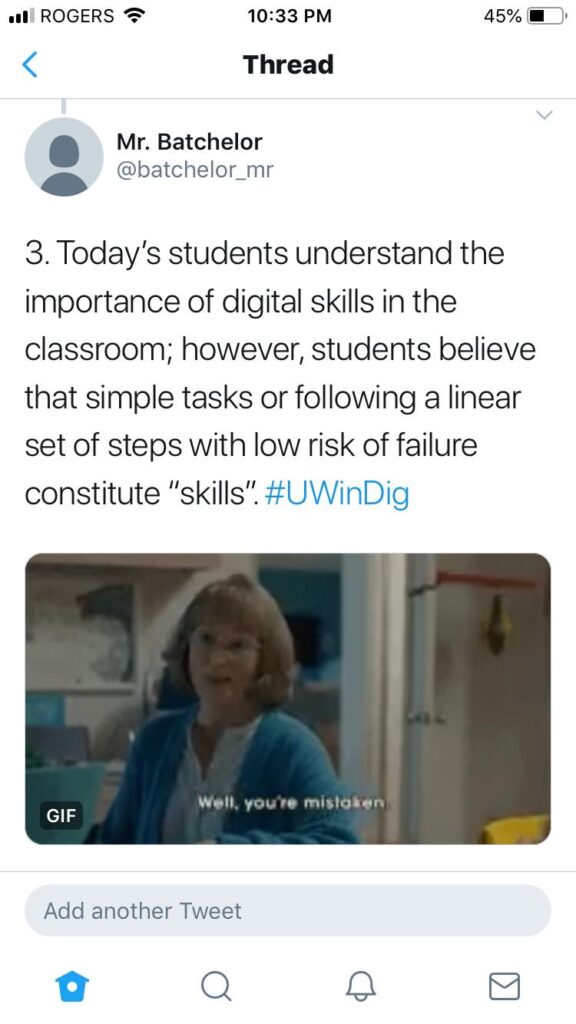
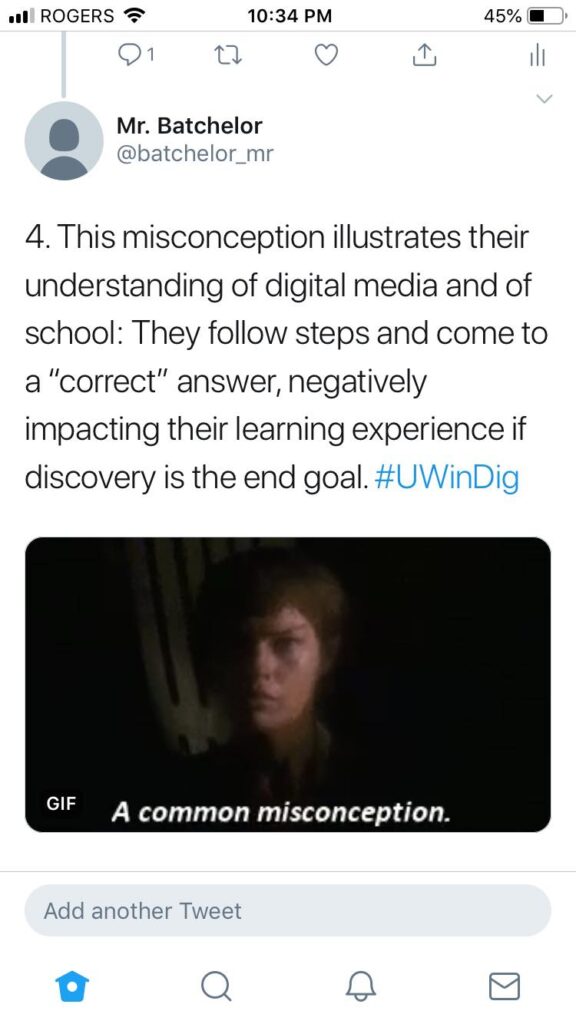
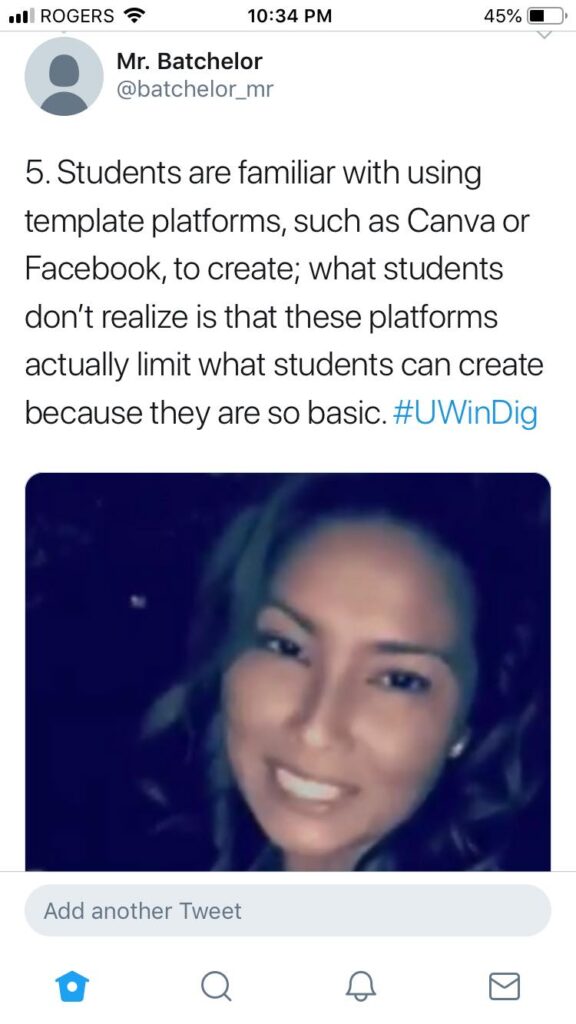
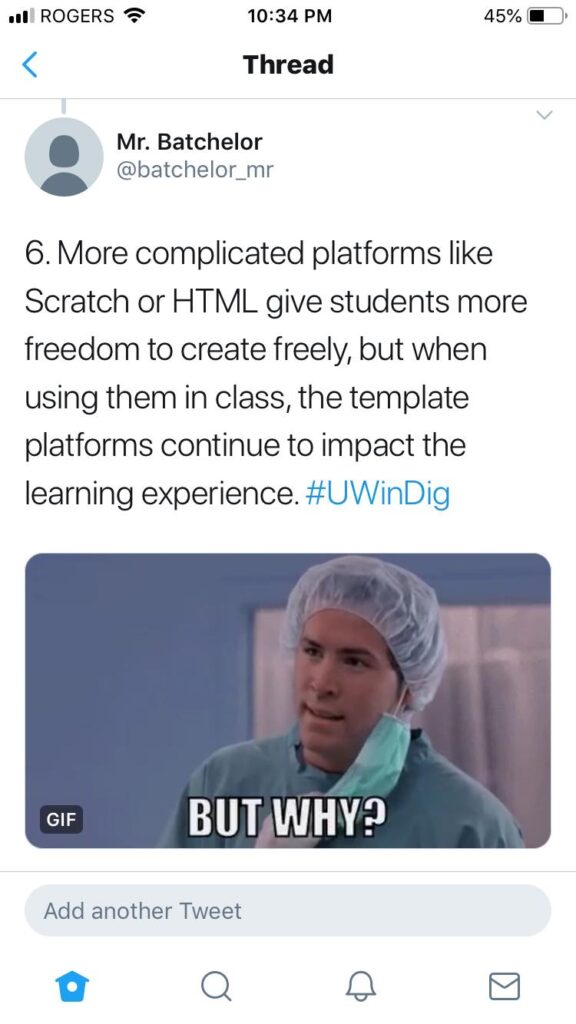
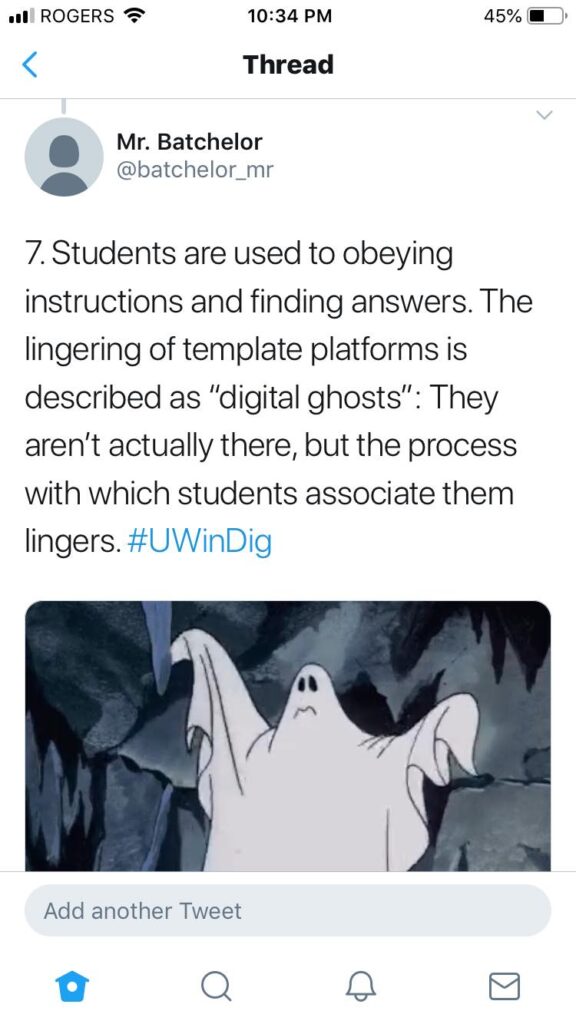
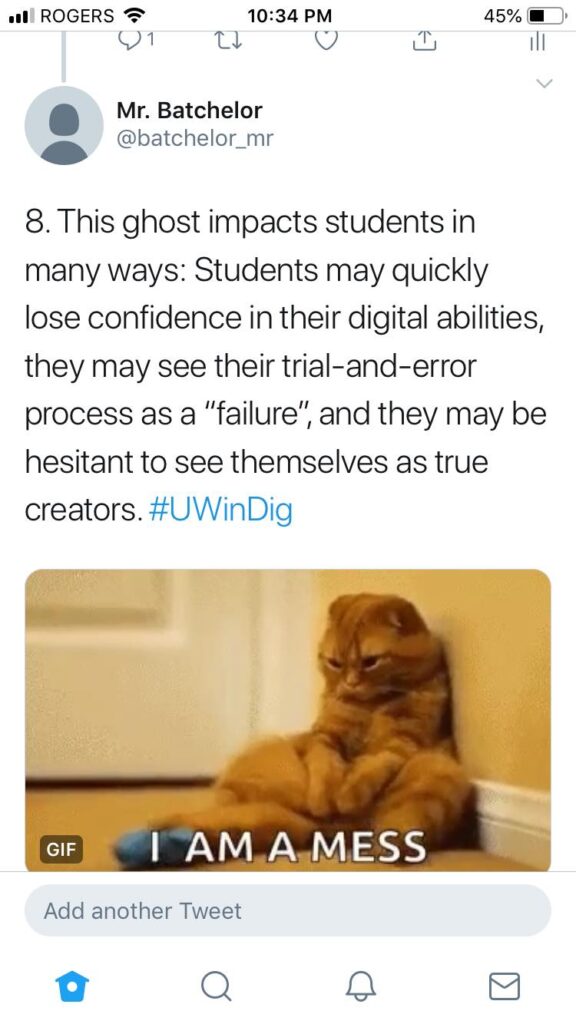
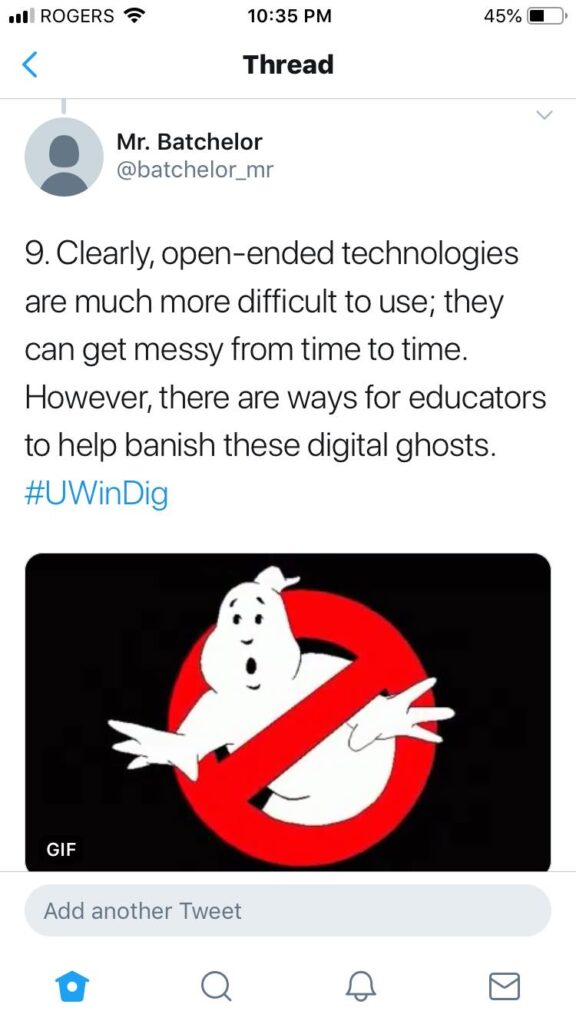
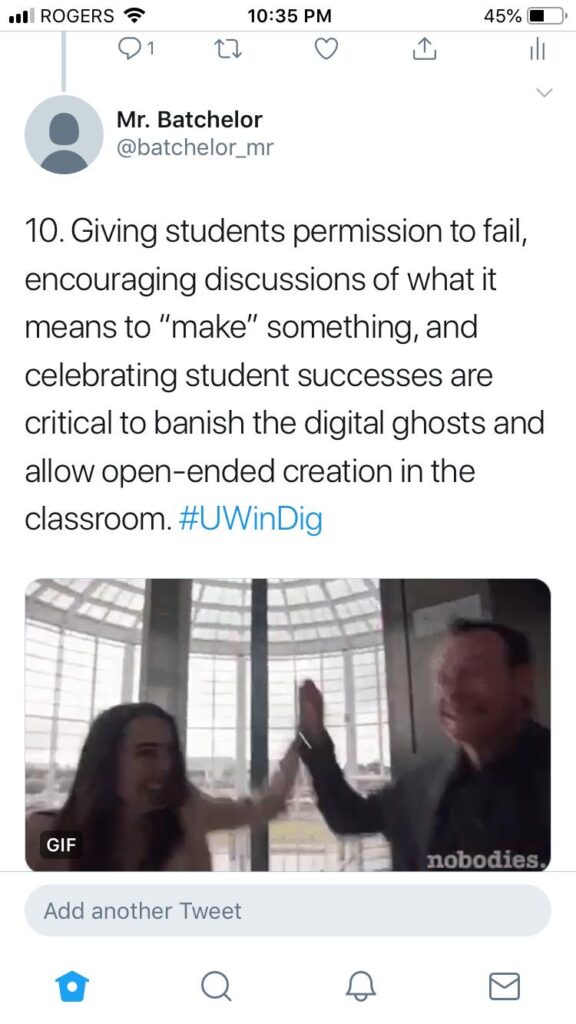
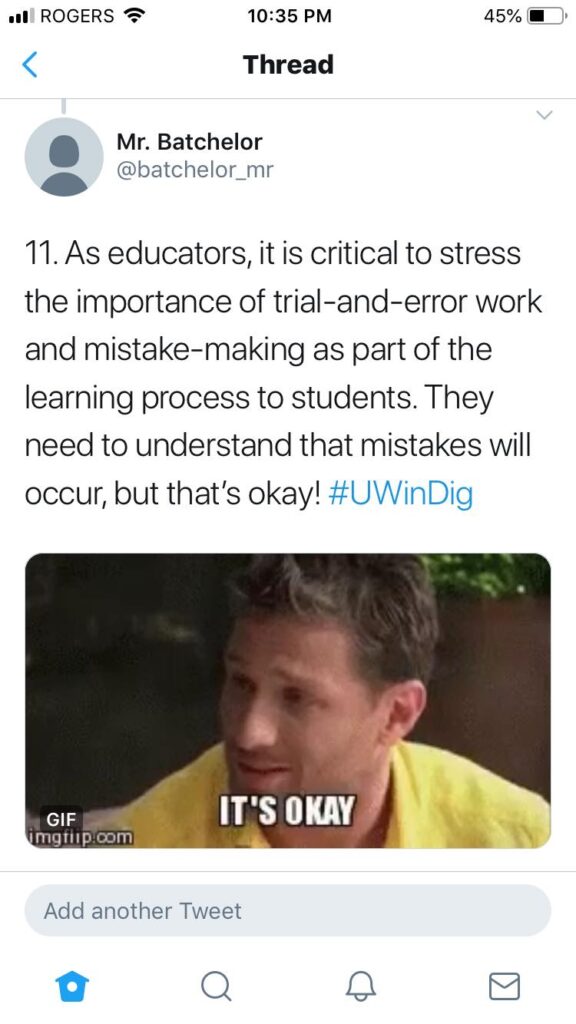
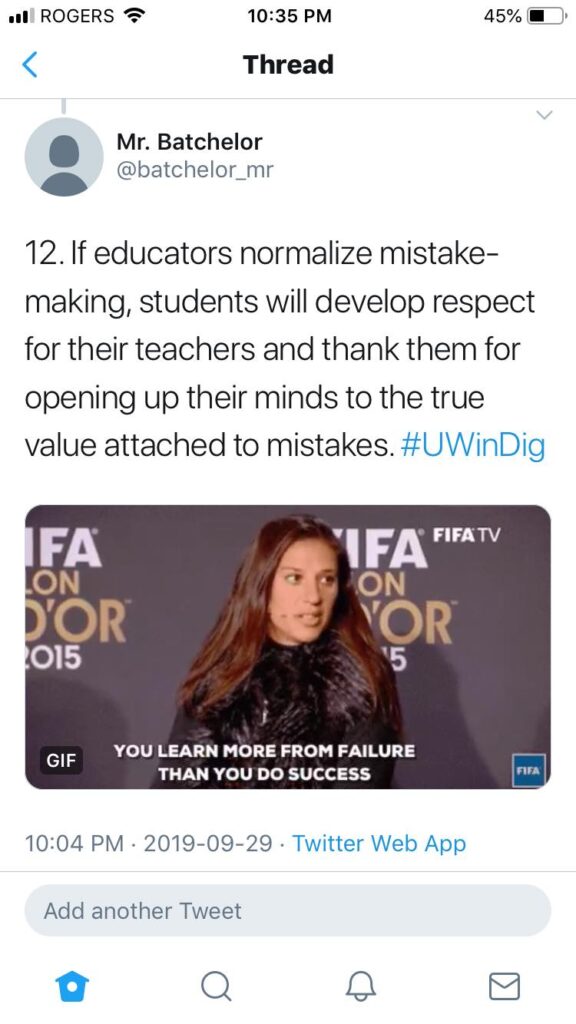
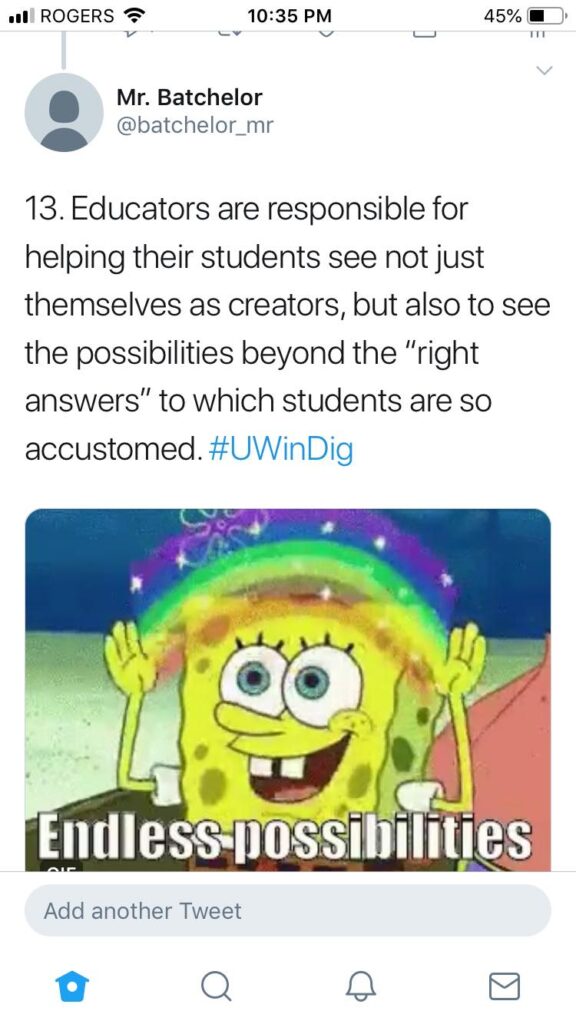
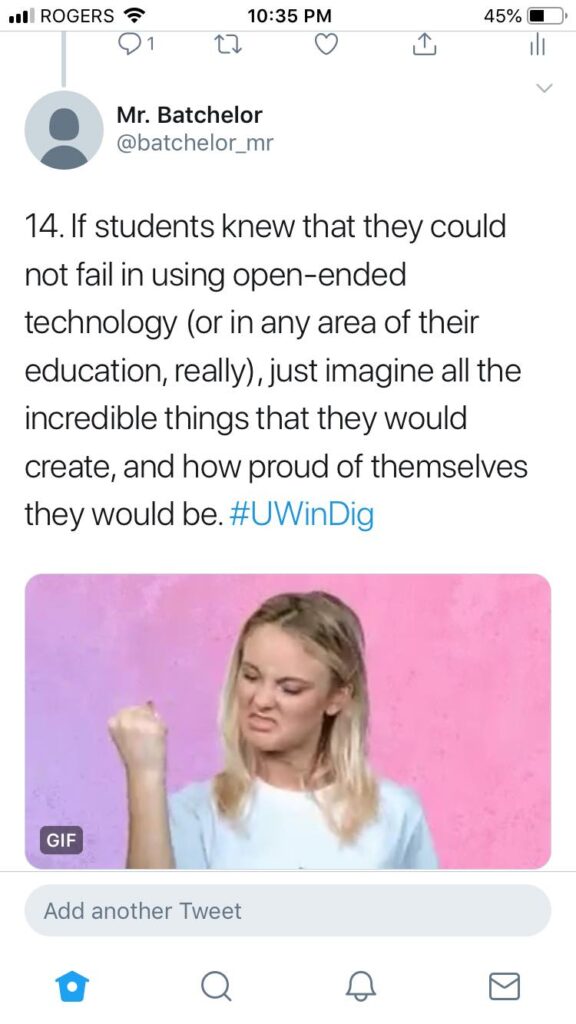
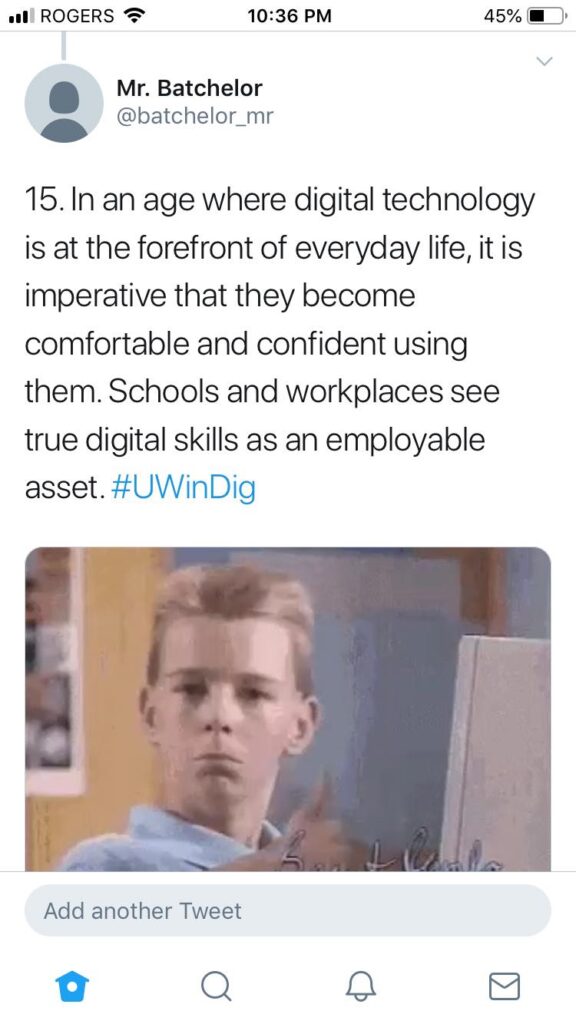
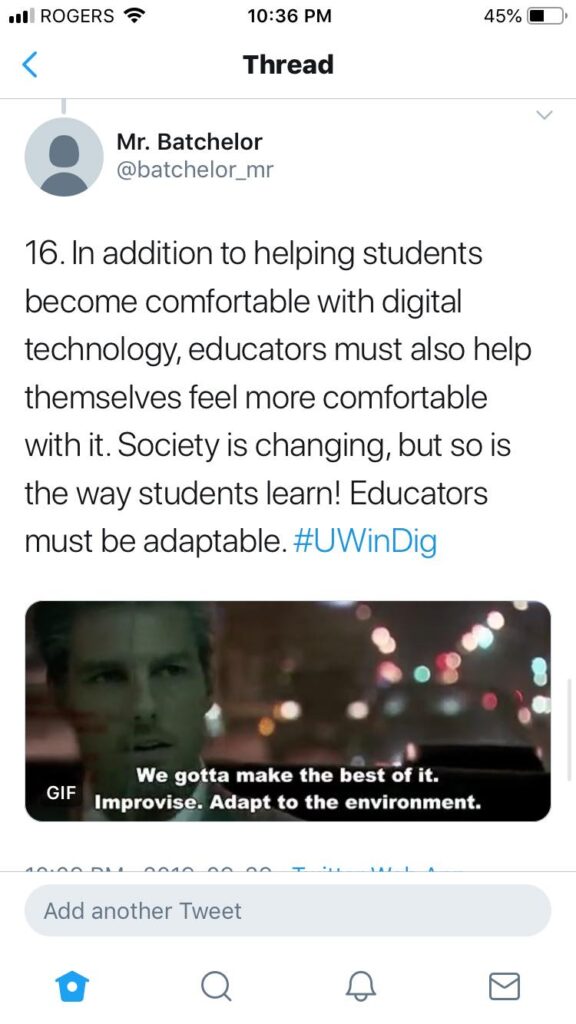
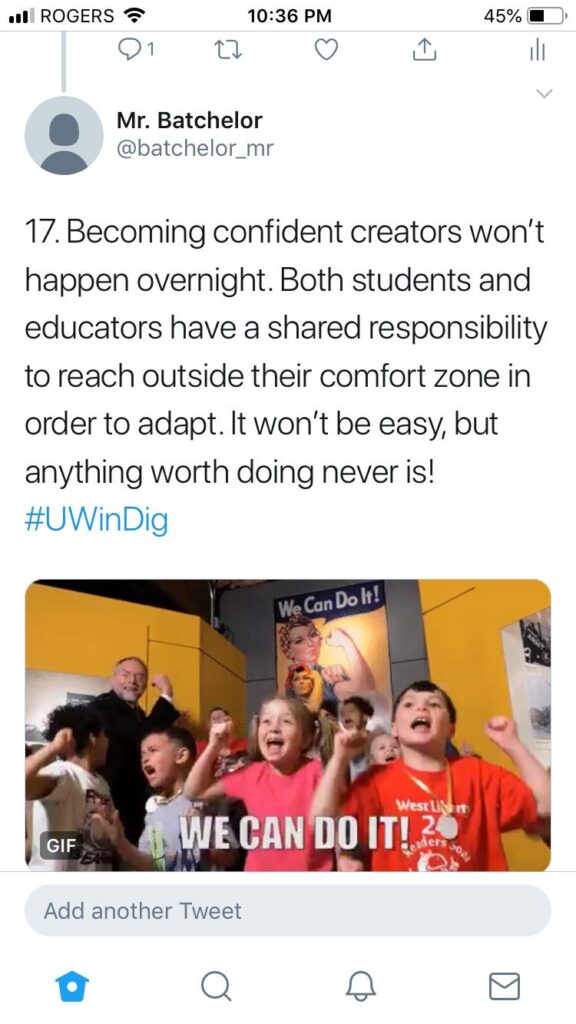
When I was a student using different digital technologies in high school, I felt very similar to the students that Hinck describes in her article: Looking to follow a clear, linear set of steps to achieve a correct answer and a good grade. Looking back, I realize that there weren’t as many opportunities in my own classes to use template platforms, let alone open-ended technologies, as there are in today’s classrooms. The vast majority of assignments that I did were either essays in Microsoft Word or presentations in PowerPoint, which did get quite boring after four years of mostly the same thing. There were a couple of exceptions, though. When I was in Grade 10, I took a class called Introduction to Business, and for our final course assignment, we had to make a video in groups about any course material of our choosing. My group made our video using Powtoon, and while it was a neat experience, I can admit that the only thing on our group’s mind was getting that good grade, so unfortunately we focused more on that and less on the actual process of discovery. In my Grade 11 Travel and Tourism class, we had to make an infographic using Piktochart for one of our assignments. This assignment was done individually, and again, I was only focused on getting a good grade as opposed to actually discovering my inner creator. Those assignments taught me that during my time as a student in university, I should start putting more of an emphasis on learning more about digital technologies within an assignment, and what I am capable of creatively. Furthermore, as an educator, it will be critical for me to stress the importance of trial-and-error and mistake-making as part of the learning process to my students. It seems normalized for students to believe that they need to get everything perfect, but in a world where digital technology becoming more and more relevant in everyday life, students need to understand that mistakes will occur, and that’s alright! When I am in a classroom teaching (any subject), I will do my best to encourage mistake-making and emphasize the fundamental importance that mistakes play in the learning process. If I can manage to master that, then I think my students will develop respect for me and thank me for opening up their minds to seeing how valuable mistakes really can be.
You have reached the end of my blog. Thank you for reading! I actually had a lot of fun making this, so I hope you enjoyed it!
